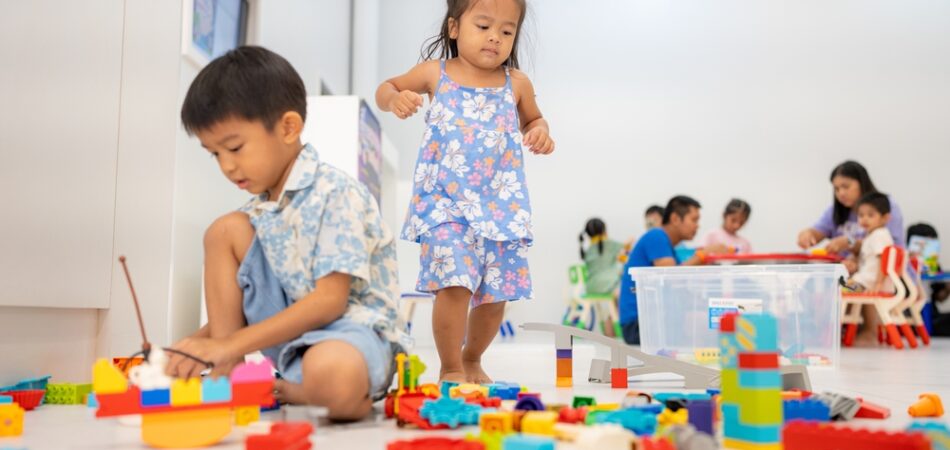
Creating a nurturing and secure environment for children in childcare is essential for their overall development and well-being. Whether you’re running a private pre-k in Millwood, NY, or managing an after school program in Millwood, NY, this guide will provide you with actionable insights on how to cultivate a space where children can thrive.
The Importance of a Safe and Stimulating Childcare Environment
A childcare setting serves as a second home for children, playing a vital role in their cognitive, social, and emotional development. By ensuring safety and offering engaging activities, childcare providers can support children in building essential skills and a love for learning.
Benefits of a Safe Environment
A safe environment prevents injuries and fosters trust among children, parents, and caregivers. It also sets the foundation for exploration, curiosity, and confidence in young learners.
The Role of Stimulation in Early Childhood Development
Stimulating environments promote creativity, problem-solving, and language skills. Activities that challenge and engage children’s minds help in developing their intellectual and social abilities.
Key Components of a Safe Childcare Environment
Safety should be the cornerstone of every childcare program. Below are the essential aspects to consider:
Physical Safety Measures
- Childproofing the Space:
- Install safety gates and outlet covers.
- Secure heavy furniture to the walls.
- Use non-slip mats in play areas.
- Emergency Preparedness:
- Have a clear evacuation plan in case of fire or natural disasters.
- Keep a fully stocked first aid kit accessible.
- Train staff in CPR and first aid.
- Cleanliness and Hygiene:
- Regularly sanitize toys, surfaces, and play equipment.
- Ensure proper handwashing facilities are available.
Emotional Safety
- Building Trust:
- Foster open communication with children and parents.
- Encourage children to express their feelings and concerns.
- Positive Discipline:
- Use constructive methods to address behavioral issues.
- Avoid punitive measures that may cause emotional distress.
Designing a Stimulating Environment
Creating a stimulating environment involves incorporating elements that nurture curiosity, creativity, and learning.
Age-Appropriate Activities
- Infants and Toddlers:
- Sensory play with textured objects and soft toys.
- Musical activities like singing and clapping.
- Preschoolers:
- Hands-on activities such as building blocks and puzzles.
- Storytime sessions to enhance language skills.
- School-Age Children:
- Art and craft projects.
- Problem-solving games and STEM-related activities.
Engaging Learning Spaces
- Reading Nooks:
- Create cozy corners with age-appropriate books.
- Use comfortable seating like beanbags or cushions.
- Creative Areas:
- Provide supplies for painting, drawing, and sculpting.
- Display children’s artwork to encourage pride in their achievements.
- Outdoor Play Zones:
- Include equipment like swings, slides, and climbing frames.
- Ensure the area is fenced and free from hazards.
Incorporating Technology Responsibly
While technology can be a valuable learning tool, it’s important to use it sparingly and purposefully.
- Interactive Apps:
- Choose educational apps that promote critical thinking and problem-solving.
- Screen Time Guidelines:
- Limit screen time according to age-appropriate recommendations.
- Balance digital activities with physical and social play.
Fostering Social and Emotional Growth
Social and emotional development is as crucial as intellectual growth. Here’s how childcare providers can support this:
Encouraging Positive Interactions
- Group Activities:
- Organize cooperative games and team-building exercises.
- Promote sharing and turn-taking during play.
- Conflict Resolution:
- Teach children to communicate their feelings and resolve disputes amicably.
- Model appropriate behavior for handling disagreements.
Building Confidence
- Celebrating Achievements:
- Acknowledge children’s efforts, no matter how small.
- Create a “Wall of Fame” to showcase their accomplishments.
- Encouraging Independence:
- Provide opportunities for children to make choices.
- Allow them to attempt tasks on their own, offering support as needed.
Partnering with Parents
Effective childcare programs recognize the importance of involving parents in their child’s development.
Open Communication
- Daily Updates:
- Share information about the child’s activities and progress.
- Use digital platforms or journals to keep parents informed.
- Parent-Teacher Meetings:
- Schedule regular conferences to discuss goals and concerns.
- Encourage parents to share insights about their child’s needs.
Collaborative Learning
- Workshops and Events:
- Host parenting workshops on topics like child safety and development.
- Organize family events to strengthen community ties.
- Home Learning Activities:
- Provide take-home resources like activity kits or reading lists.
- Encourage parents to reinforce classroom lessons at home.
Emphasizing Inclusivity and Diversity
Childcare environments should celebrate differences and teach children the value of diversity.
Culturally Responsive Practices
- Multicultural Activities:
- Include books, music, and toys representing various cultures.
- Celebrate cultural festivals and traditions in the classroom.
- Language Inclusivity:
- Support children who speak different languages by incorporating bilingual materials.
- Encourage peer-to-peer learning to bridge language gaps.
Addressing Special Needs
- Adapting Activities:
- Modify games and tasks to accommodate children with disabilities.
- Provide sensory-friendly spaces for children who need them.
- Training Staff:
- Ensure caregivers are trained to support diverse needs.
- Work with specialists to create individualized care plans.
Maintaining Quality Standards
Consistency is key in providing a safe and stimulating environment. Regular evaluations and improvements are necessary to uphold high standards.
Staff Training and Development
- Continuous Education:
- Provide ongoing training on child development and safety protocols.
- Encourage staff to attend workshops and certifications.
- Team Collaboration:
- Schedule regular team meetings to discuss challenges and share ideas.
- Foster a supportive workplace culture.
Program Evaluation
- Feedback Mechanisms:
- Solicit feedback from parents and staff to identify areas for improvement.
- Self-Assessment Tools:
- Use checklists and evaluation forms to review safety and educational practices.
Conclusion
Creating a safe and stimulating environment for children in childcare is a multifaceted task that requires attention to detail, empathy, and collaboration. Whether you are managing a private pre-k in Millwood, NY, or leading an after school program in Millwood, NY, prioritizing safety, engaging learning experiences, and emotional support will set the stage for children to grow into confident and capable individuals. By investing in high-quality childcare practices, you’re not just supporting children but also contributing to the well-being of the entire community.
Need Childcare Services in Millwood, NY?
At Happy Hearts on the Hudson our goal is to establish an environment rich in self-expression and self-confidence. Where every child learns the importance of responsibility, decision making, and respect for others. We are a family-owned business caring for children from 6 weeks old to 12 years old. Our teachers strive to develop the children’s skills by engaging their hearts as well as their minds. For fun, care, or child education feel free to stop by or give us a call today!
